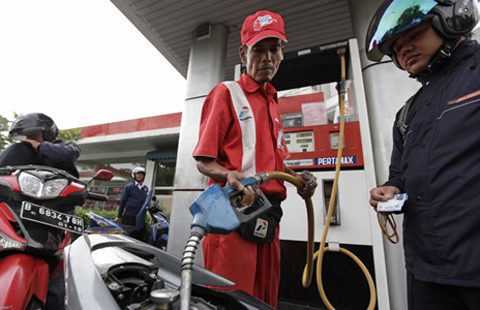Removing all energy subsidies would free up much needed cash for Indonesia, write Stephen Howes and Robin Davies.
We were very relieved that Joko ‘Jokowi’ Widodo won Indonesia’s presidential election.
When we were writing our August “Survey of Recent Developments” for the Bulletin of Indonesian Economic Studies it seemed a foregone conclusion that he would. A victory for Prabowo Subianto would have raised far more serious questions for the future of Indonesia’s democracy and perhaps its economy than we contemplated in our article, though we did note that Jokowi’s policy platform was more moderate and economically literate.
We got nervous just before the elections, especially when political observers of Indonesia in Australia designated Prabowo as the front-runner (here and here). The reasons for this were never clear. No polls were published showing Prabowo in front, though some had the election too close to call.
Jokowi triumphed and Indonesia is the better for it. But his victory is only the beginning of his battles.
The new president will face many challenges, but none more pressing and immediate than dealing with Indonesia’s energy subsidies, which this year will constitute a quarter of total spending. Everyone agrees that these subsidies are wasteful, but their persistence is striking. They were 20 per cent of expenditure when President Yudhoyono (SBY) came to power, and they will be almost 25 per cent when he leaves office later this year.
How can Indonesia escape from its subsidy trap?
President Yudhoyono (SBY) authorised three large fuel price hikes over the course of his two terms, with compensation packages for each to help soften the blow. These were hailed worldwide as courageous and intelligent policy reforms. President Obama asked SBY to talk about them at the G20 in 2009, to inspire other countries to follow suit. But they haven’t worked. The increases have been too few and far between, and there have been price decreases as well.
The enemy of fuel subsidy containment has been not so much a rising international oil price, or even a depreciating rupiah, as simply inflation. After inflation, the subsidised or regulated petrol price is today 22 per cent lower than it was immediately after the large price hikes in 2005. The unsubsidised price is (or would be) 6 per cent lower, and the per-litre subsidy 43 per cent larger. Huge political capital has had to be consumed merely to make up for the erosion over time in the real value of the subsidised price.
A more radical reform program is needed: instead of one-off increases, a time-bound program with an upfront agreement that the end result would be the elimination of energy subsidies within, say, three or four years. Encouragingly, Jokowi is reported to have committed to something like this in the election campaign. On May 2, he was quoted in the Jakarta Post as saying ‘in four years, the fuel subsidy should be eliminated gradually, step by step, until it’s gone.’
Whether Jokowi will deliver remains to be seen. If he decides to have a go, it would be wise for him to start early and to seek parliamentary support, as difficult as that would be. He could start as early as the 2015 budget, which will be presented to Parliament this month by the outgoing SBY, but approved at the start of the new president’s term.
If all energy subsidies were eliminated immediately, the government would free up some 4.5 per cent of GDP for deficit reduction or other spending. This would on its own solve Indonesia’s fiscal problems, at least for several years. But, given the record, it would be naive to propound a fiscal adjustment strategy based only on fuel and electricity price increases. A broader approach to fiscal reform is needed. We set out some of the elements in our third and final post (to be posted Wednesday).
Stephen Howes and Robin Davies are Director and Associate Director, respectively, at the Development Policy Centre at the Crawford School of Public Policy, The Australian National University. This is the second in a series of three posts on their August Bulletin of Indonesian Economic Studies “Survey of Recent Developments”. The first post can be found here.
 Facebook
Facebook  Twitter
Twitter  Soundcloud
Soundcloud  Youtube
Youtube  Rss
Rss 
